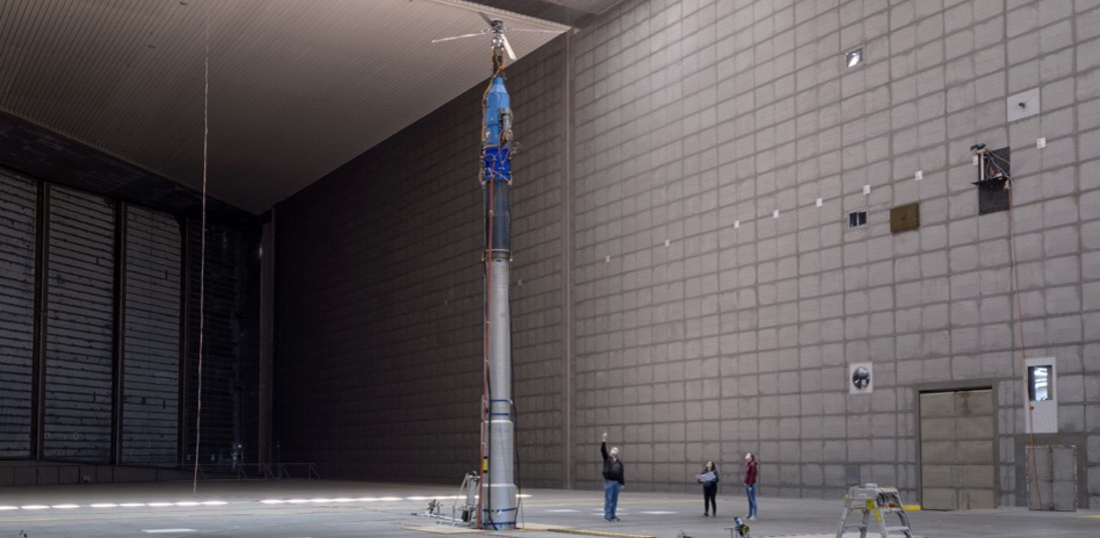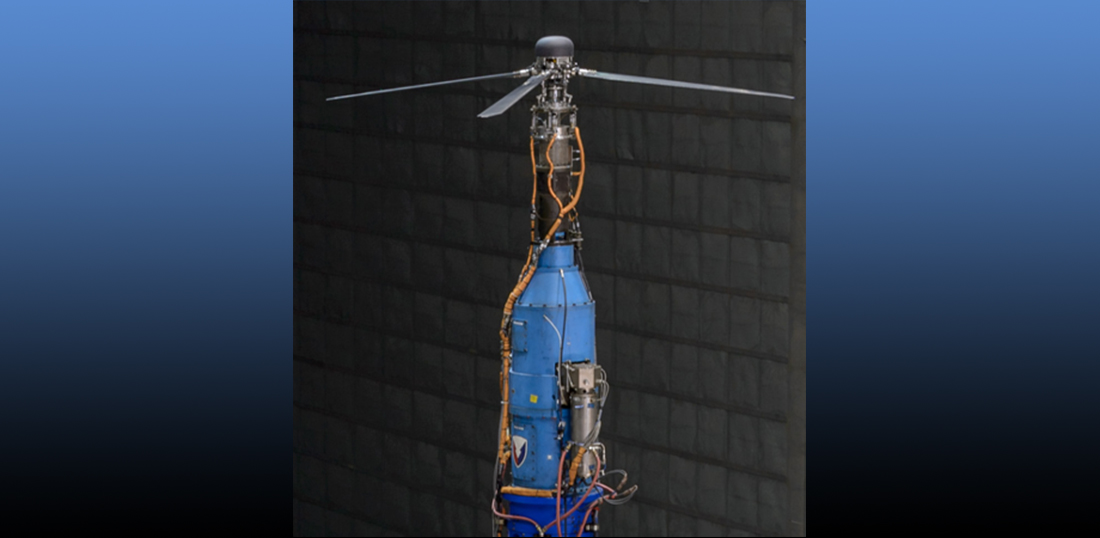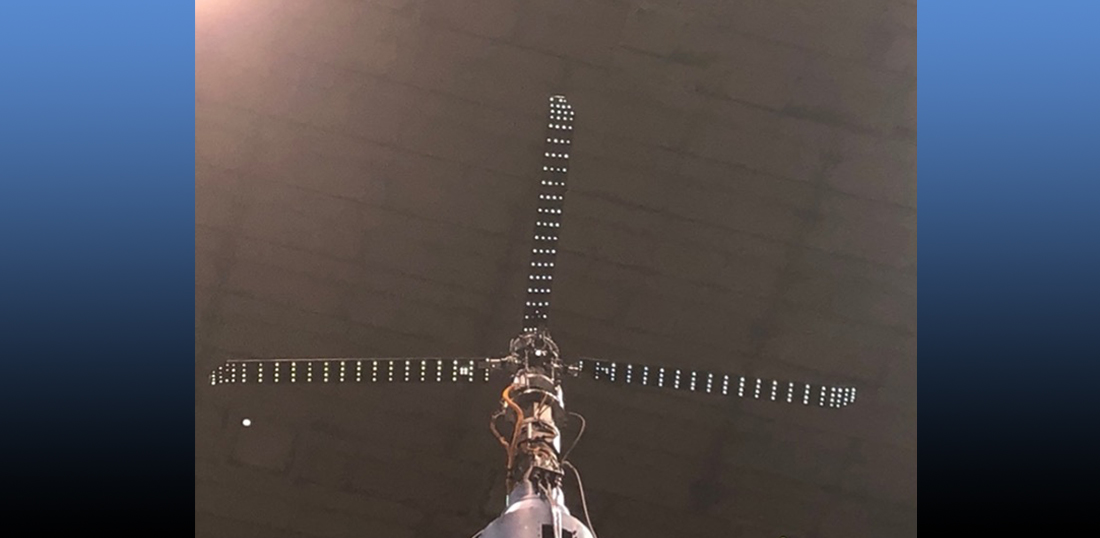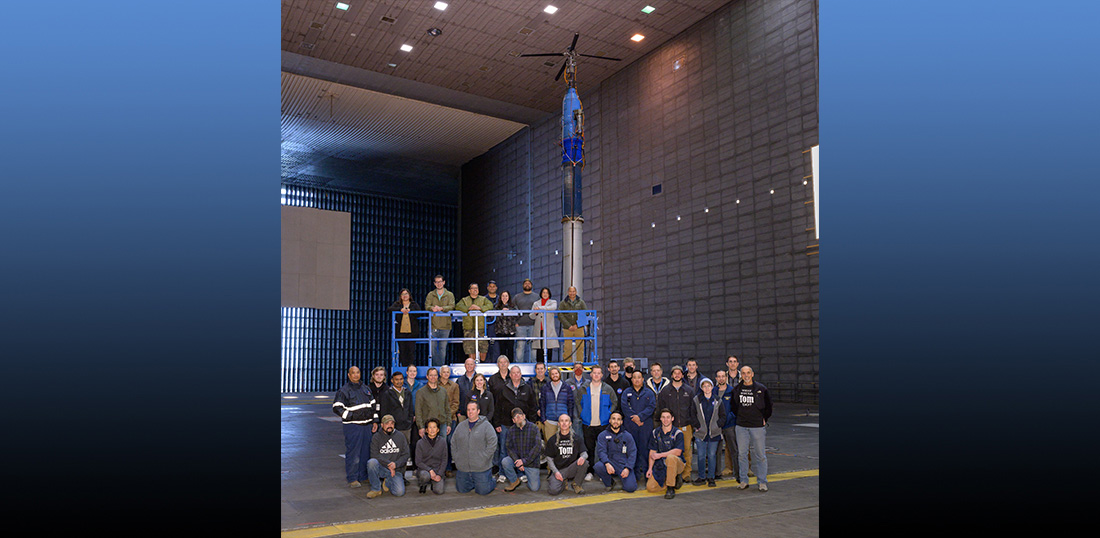Comprehensive Hover Measurements
This website provides access to data acquired during a model-scale hover test of a 4-bladed, 11.08-ft diameter rotor (designated the Hover Validation and Acoustic Baseline (HVAB) rotor) conducted inside the U.S. Air Force’s National Full-Scale Aerodynamics Complex 80- by 120-Foot Wind Tunnel test section. The primary objective of this NASA/U.S. Army joint test program was to acquire key experimental data for a hovering rotor of sufficient quality and quantity to allow validation of state-of-the-art analysis codes. A comprehensive measurement set has been acquired, including rotor performance, blade airloads, flow transition locations, blade deflections, wake geometry, and vortex properties for a range of tip Mach numbers and collective settings. A summary of this test program, including detailed descriptions of the test hardware, test objectives, approach and sample results, was presented at the VFS 79th Annual Forum. Detailed descriptions of the blade geometry, instrumentation, and structure are provided in NTRS. Additional information, including blade surface geometry and a representative CFD volume grid, can be found on the website of the AIAA Rotorcraft Hover Prediction Workshop.
A general description of the HVAB test data (including a run list, parameter descriptions, and recommendations on how to best use the data for validation) is provided in the General Information tab. The actual test data is provided under the following tabs: Performance Data, Thermography Data (Transition Locations), Shadowgraphy Data (Wake Geometry), Photogrammetry Data (Blade Deflections), PIV Data (vortex properties), and Pressure and Airloads Data.
Data will be released to this website as data reduction is completed. Any data (or description) updates will be documented in the following revision history. Questions or comments on the provided information can be directed to either Lauren Wagner or Tom Norman.
Revision History
- 11/15/2024- Minor Updates: Small fixes to performance data for Runs 59, 65, and 92_95, and performance Readme.
- 9/30/24 – Major Updates: 1) Updated previously-released thermography data using new tracing algorithm and released data from 9 additional runs; 2) Released Particle Image Velocimetry (PIV) data, including velocity fields and vortex properties; 3) Released additional blade pressure data and updated airloads using new measurements; 4) Corrected errors in performance data (Runs 30, 72, 77) and added data from Runs 92 and 95.
Minor Updates: 1) Updated General Info documents and all data Readme files to account for newly released data; 2) Revised layout of website to incorporate new data updates; 3) Provided additional contact information on homepage.
- 11/6/23 – Initial release of blade pressure and airloads data (including Readme files). Updated Readme file for the shadowgraphy data (added plots) as well as the Data Use Recommendations file (in the General Info section; noted kulite location errors in NASA TM).
-
9/28/23 - Initial release of test data. Includes all performance, photogrammetry, shadowgraphy, and pressure data. Thermography data provided for Runs 50, 52, and 54; digitized transition data for upper surface only.
- 11/15/2024–Minor Updates: Small fixes to performance data for Runs 59, 65, and 92_95, and performance Readme.









 Aeromechanics Office Website
Aeromechanics Office Website